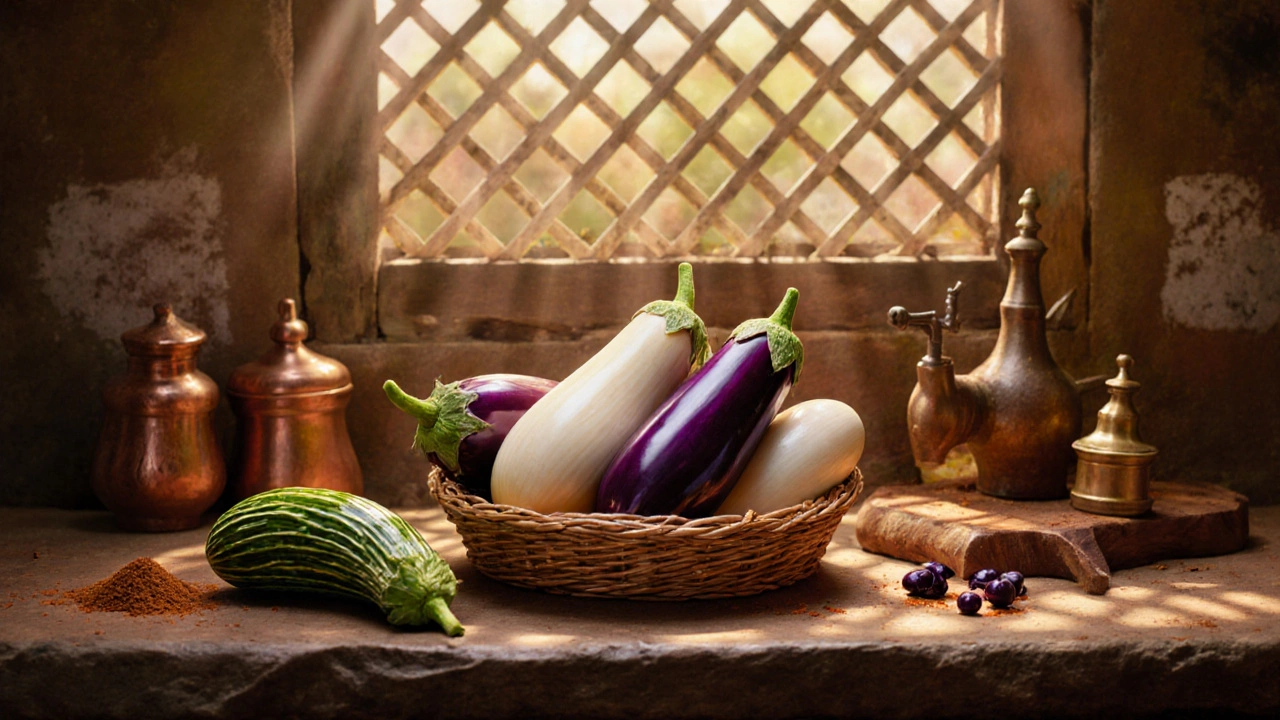Explore why Brinjal (eggplant) is crowned the king of vegetables in India, its top varieties, growing tips, nutritional benefits, and iconic recipes.
Indian Vegetable Varieties: Native Crops, Growing Tips, and Why They Matter
When we talk about Indian vegetable varieties, native crops that have been grown in India for centuries, adapted to its heat, monsoons, and soil types. Also known as traditional Indian crops, these plants don’t just feed families—they’re built for resilience, taste, and low input needs. Unlike imported hybrids that demand chemical inputs and perfect conditions, Indian vegetable varieties like brinjal, amaranth, cluster beans, and ridge gourd have evolved right here. They survive dry spells, handle heavy rains, and grow well even in small spaces—perfect for balcony gardens, backyard plots, or small farms.
These crops aren’t just old-school. They’re smart. Native Indian vegetables, plants like karambha (cucumber gourd) and murungai (drumstick) that have deep cultural roots and high nutritional value often outperform imported types in yield and flavor when grown under local conditions. They need less water, resist pests naturally, and don’t require expensive fertilizers. This makes them ideal for organic gardening and sustainable farming. And if you’ve ever tried growing tomatoes or capsicum in India’s summer heat, you know why these native options matter—they actually survive.
What you’ll find in this collection isn’t just a list of names. It’s a practical guide to what works, what doesn’t, and how to grow these vegetables successfully. You’ll see real examples of how farmers and home gardeners use Indian vegetable gardening, the practice of cultivating native and adapted vegetables using local knowledge and low-tech methods to get harvests even in tough conditions. We cover soil tips, seasonal timing, pest tricks, and even how to save seeds from your own plants. No fluff. No theory. Just what you need to grow more, waste less, and eat better.
You’ll also find answers to questions like: Which vegetables grow fastest in 30 days? What grows well on a balcony in Chennai or Delhi? Which ones do rabbits leave alone? And why do some Indian vegetables taste better when grown in their native regions? The posts here are written by people who’ve tried it—farmers in Punjab, gardeners in Kerala, urban growers in Bengaluru. They’re not selling seeds. They’re sharing what actually worked.
Whether you’re starting your first vegetable patch or looking to switch from imported varieties to something tougher and tastier, this collection gives you the real-world insights you won’t find in big agribusiness manuals. These are the vegetables that have fed India for generations. Now it’s your turn to grow them right.
